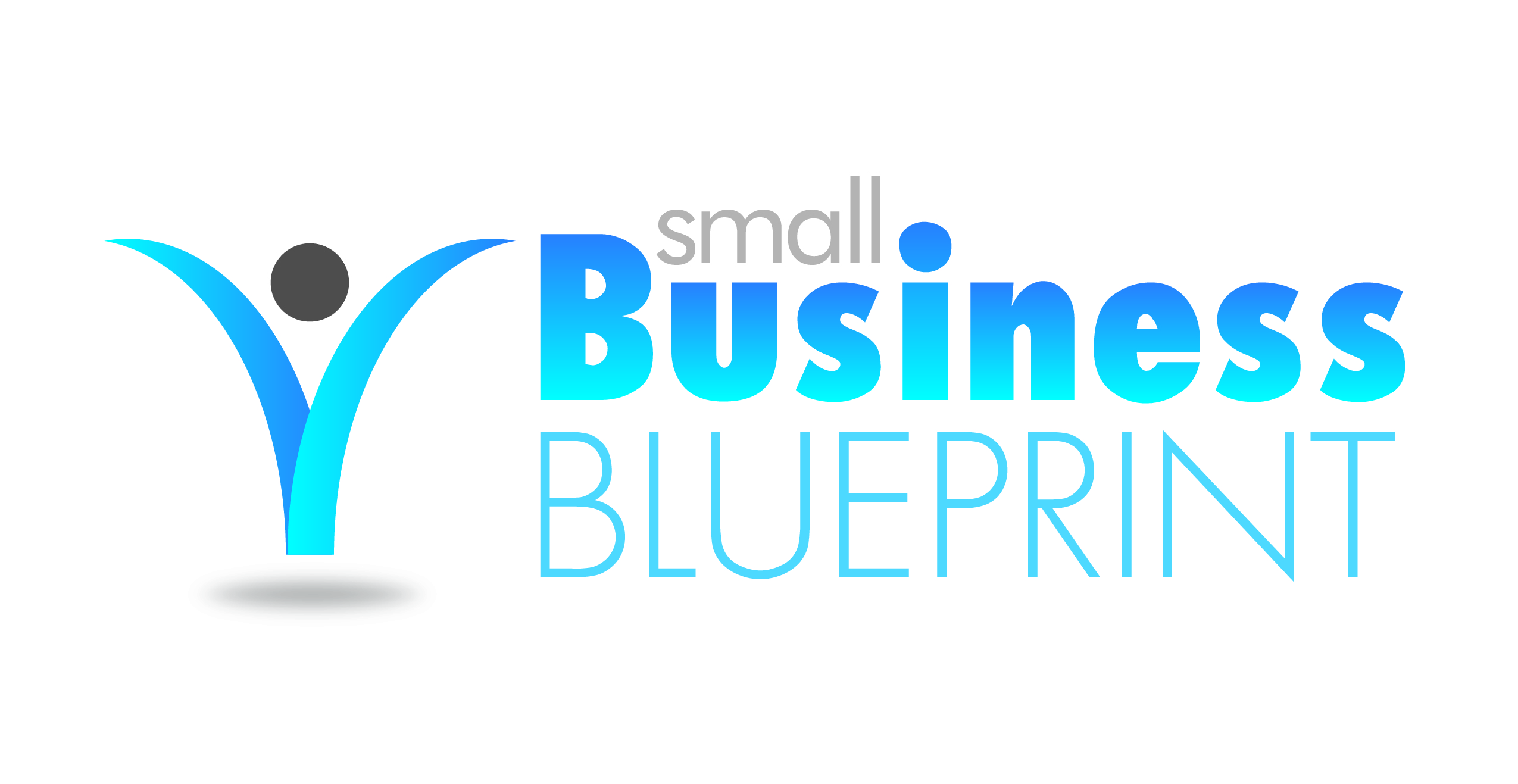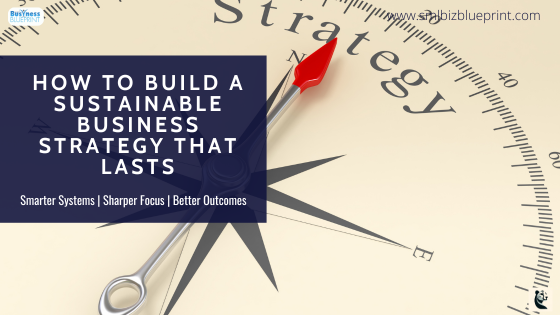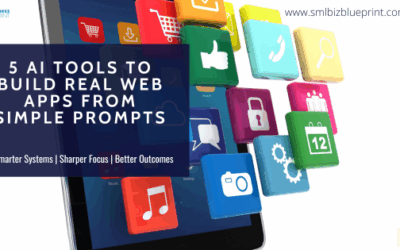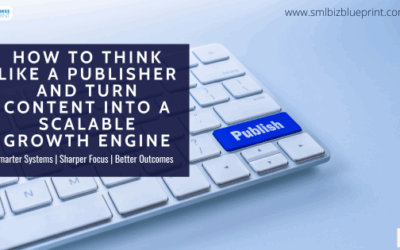A sustainable business strategy is a long-term plan that helps your business stay profitable, resilient, and competitive through changing markets.
This article outlines five essential steps—defining your vision, building scalable systems, differentiating your offer, strengthening your finances, and staying adaptable—to create a business that lasts.
Use this guide to future-proof your business with clarity, structure, and strategic focus.
What’s the point of building something that can’t survive the next storm?
Most business owners don’t fail because they lack hustle or ambition. They fail because they’re chasing short-term wins with no long-term structure. Revenue rises for a while, then plateaus. New competitors emerge. Market trends shift.
And suddenly, what worked before no longer does.
If you’ve ever asked yourself, “How do I build a business that’s still standing five or ten years from now?” you’re already ahead of most.
This post is your roadmap to long-term sustainability—not in the environmental sense, but in the strategic one.
We’ll show you how to develop a sustainable business strategy that’s resilient, scalable, and built to adapt without breaking.
You’ll learn:
- What a strategic sustainability mindset looks like
- How to structure your operations so they grow with you.
- Why financial discipline beats aggressive scaling
- And the five practical steps to build a business that doesn’t just survive, but thrives over time
Let’s dig in—and future-proof your business starting today.

#1 What Is a Sustainable Business Strategy—and Why It Matters for Longevity
A sustainable business strategy is your long-term game plan for staying relevant, profitable, and resilient, no matter how the market shifts.
Unlike short-term tactics that chase the latest trend or quick profit, a sustainable strategy is built to weather economic downturns, evolving customer needs, and increased competition.
It’s not about doing more—it’s about doing what matters, consistently and deliberately.
It means your business has the clarity, structure, and systems in place to keep operating and growing over time. You aren’t just reacting to what’s happening this month; you’re proactively building for the next three, five, or even ten years.
That’s the difference between momentum and endurance.
Short-term wins feel good—but without a strategic foundation, they’re fragile.
The businesses that thrive in the long term do so because they’ve planned for the future.
They’ve chosen to focus on what gives them a lasting advantage: scalable systems, customer loyalty, financial resilience, and clear positioning.
Data supports this: businesses with a long-term strategic focus outperform their competitors in both revenue and profitability.
According to a McKinsey Global Institute study, long-term-oriented companies generate 47% more revenue and 36% higher earnings than those focused on the short term. That’s not by luck—it’s by design.
Example:
Consider Netflix. Their pivot from DVD rentals to streaming—and now to original content and gaming—wasn’t a reaction. It was a long-term vision, backed by strategic investments and a clear understanding of where the market was heading. That foresight gave them resilience while their competitors faltered.
Pro Tip:
Don’t confuse “being busy” with being sustainable. A strategy that lasts is built on focus, systems, and deliberate growth, not endless hustle.
You’re hitting $2M in revenue, but every month feels like a scramble. Teams are busy, decisions are reactive, and growth feels more like chaos than control. You can’t step away without things slowing down—or breaking. That’s not a lack of talent—it’s a lack of strategy.
The shift starts when you stop chasing tactics and start anchoring everything to a long-term vision.
Step 1 – Define a Clear Long-Term Vision for Your Business
A sustainable business begins with a clear, compelling long-term vision that serves as your north star.
Without a defined destination, every decision becomes a reactive response. A long-term vision gives your strategy direction, aligns your team, and filters out distractions that don’t move the business forward.
It answers the essential question: Where are we going, and why does it matter?
Your vision isn’t a slogan—it’s a strategic compass that guides everything from product development to hiring.
It should articulate what your business looks like in 5 to 10 years, what impact you want to make, and what success means on your terms.
Clarity here leads to better planning, more consistent messaging, and stronger execution across departments.
Utilise proven frameworks to develop a focused and actionable vision.
- BHAG (Big Hairy Audacious Goal): Coined by Jim Collins, this sets a bold long-term goal that stretches your team beyond incremental growth.
- V2MOM (Vision, Values, Methods, Obstacles, Measures): Developed by Salesforce to align every team around a single strategic direction.
- Vision Traction Organiser (EOS): A practical tool for simplifying and crystallizing your business vision into manageable objectives.
Example:
Tesla’s vision—“to accelerate the world’s transition to sustainable energy”—has shaped every decision, from hiring engineers to entering energy storage. That clarity attracts top talent, loyal customers, and aligned investors.
Long-term business planning is more than a document—it’s a commitment to consistency over chaos.
Businesses that revisit their vision regularly and align their strategy with it are better equipped to avoid shiny object syndrome, pivot with purpose, and build lasting momentum.
Pro Tip:
Write your vision as if your ideal customer is reading it. If it wouldn’t inspire them—or your team—it’s not strong enough.
Ready to level up your business?
Sign up for our newsletter and get expert tips delivered weekly.
Step 2 – Systemise for Growth with Scalable Business Processes
Long-term sustainability depends on building systems that can operate and grow without constant hands-on effort.
If your business can’t function without you, it isn’t scalable, and it certainly isn’t resilient.
Systems transform chaotic, ad hoc operations into predictable, repeatable processes that allow your business to expand without burning out.
Systemisation is about working smarter, not harder.
Start by identifying repeatable tasks, such as onboarding clients, sending invoices, or managing social media, and document them as SOPs (Standard Operating Procedures).
This not only saves time but ensures consistency and quality even as your team grows or changes.
Automation multiplies the power of your systems and reduces human error.
From email marketing workflows to project management tools, automation platforms like Zapier, Airtable, Notion, and HubSpot help eliminate bottlenecks.
When paired with well-documented processes, automation frees up your team to focus on high-impact, strategic work.
Example:
Mailchimp scaled from a small email provider to a multi-million-dollar platform by automating core services, systemising customer support, and using internal knowledge bases to train staff and maintain quality.
Resilient businesses don’t rely on heroics—they rely on systems that work.
When growth increases complexity, systems provide stability. They allow you to delegate without micromanaging and expand your capacity without sacrificing control.
Pro Tip:
If a task is repeated more than twice a week, create a process for it. If it’s digital and repeatable, automate it.
For months, your operations lead has been duct-taping spreadsheets together to track orders and client onboarding. Everyone’s “busy,” but mistakes are creeping in, and your top salesperson is still chasing their own follow-up emails. You’re growing, but you’re also bleeding time and energy.
Systemisation isn’t overhead—it’s oxygen when your business starts to suffocate under its own growth.
Step 3 – Create a Sustainable Competitive Advantage That Stands Out
A sustainable competitive advantage makes your business the obvious choice—not just today, but for years to come.
In crowded markets, features and pricing can be copied.
What can’t be easily replicated is a deeply embedded strength: a unique process, brand narrative, customer experience, or specialisation that compounds over time.
Real differentiation is strategic—it’s built into how you operate, not just how you market.
You don’t need to be everything to everyone. You need to be irreplaceable to someone. That might mean mastering a narrow niche, delivering a customer experience competitors can’t match, or creating a proprietary framework that’s part of your service delivery.
There are three common types of sustainable competitive advantages for small businesses:
- Proprietary Systems or Methods – Your own frameworks, tech stack, or operational playbooks.
- Deep Niche Expertise – Serving a specific audience better than anyone else (e.g., HR for SaaS startups, accounting for solo creatives).
- Customer Experience Leadership – A reputation for going above and beyond in ways that create loyalty and referrals.
Stat: 89% of companies compete primarily on customer experience, not price or product (Gartner). Long-term success depends on how customers feel about your business.
Example:
Basecamp doesn’t try to out-feature competitors like Asana or Monday.com. It competes on simplicity, clarity, and a clear stance against chaos. This focused identity attracts customers who want fewer tools, not more.
Don’t just stand out. Stand for something that matters to your ideal customers.
Differentiation that aligns with your vision and values makes your strategy sustainable. It creates brand equity and makes you harder to replace, especially when markets get noisy.
Pro Tip:
If you removed your logo from your website or pitch deck, would anyone know it’s yours? If not, your differentiation isn’t strong enough.
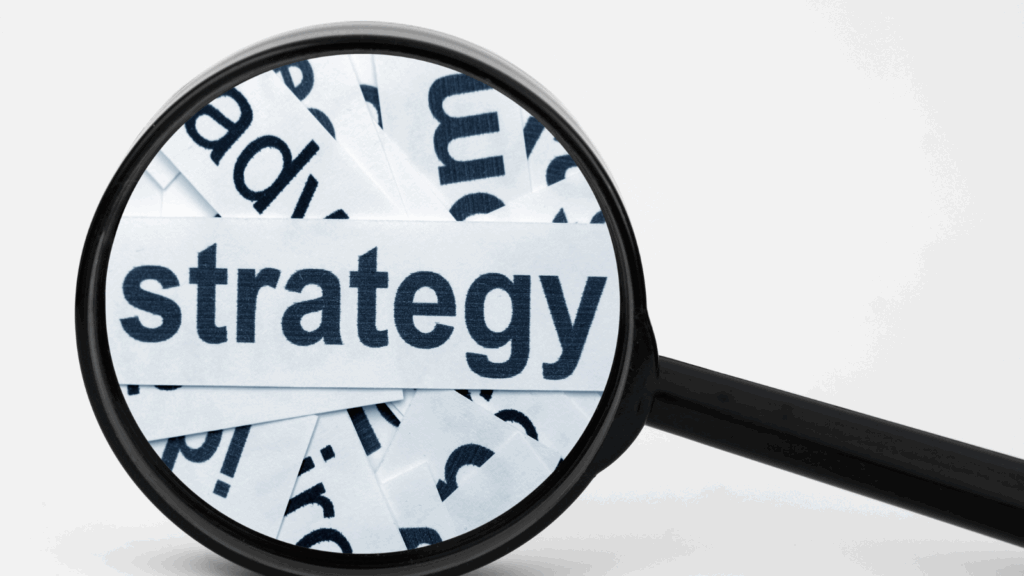
Step 4 – Build Financial Stability Into Your Growth Model
Financial stability is the backbone of any sustainable business strategy—without it, growth becomes risk, not reward.
Many small businesses fail not because they lack revenue, but because they mismanage cash flow, overextend during growth phases, or scale without a strong financial base.
A strategic approach to money management ensures you can weather downturns, fund your own expansion, and operate with confidence.
Profitability should come before aggressive growth—it’s what makes your business self-sustaining.
Too many businesses chase top-line revenue and end up scaling their problems. True strategic business sustainability means knowing your margins, controlling your expenses, and ensuring that every customer you acquire is profitable over the long term.
Track your gross margin, operating margin, and net profit monthly, not just annually.
Understand and monitor your critical financial metrics.
Some of the most important include:
- LTV: CAC (Lifetime Value to Customer Acquisition Cost): This ratio should be 3:1 or higher to justify continued investment in growth.
- Burn Rate: How much cash you’re spending each month. Know your runway.
- Break-even Point: The moment when revenues cover fixed and variable costs—vital for planning.
- Operating Cash Flow: The lifeblood of business continuity. Profit doesn’t equal cash.
Example:
Buffer, a bootstrapped SaaS business, prioritised profitability over flashy growth. They avoided venture capital, focused on transparent financials, and reinvested profits into talent and product, creating a loyal customer base and a resilient company.
Reinvest wisely—treat every dollar as if it came from your most loyal customer.
Financial discipline isn’t about being frugal—it’s about being intentional.
Sustainable businesses plan for uneven quarters, allocate budgets to high-ROI activities, and avoid chasing unprofitable trends.
Pro Tip:
Before hiring, launching a new product, or expanding marketing, run the numbers. Growth without margin is just a faster path to instability.
Last quarter looked great on paper—big sales, major wins. But your profit margin shrank, cash flow dried up, and now you’re hesitating on that new hire you thought you could afford. You’re scaling, but it’s built on hope instead of numbers.
Financial sustainability means knowing your runway before you hit the throttle.
Step 5 – Stay Adaptable with a Resilient Strategy Framework
Adaptability is the insurance policy of every resilient business model—it’s how you survive when the plan gets punched in the face.
Even the most well-structured strategy will face disruption.
Whether it’s a market downturn, a new competitor, a supply chain issue, or a shift in customer behaviour, businesses that endure are those that adapt without losing direction.
Strategic resilience isn’t about reacting—it’s about building change-readiness into your business DNA.
This involves regularly reviewing performance, scanning the market for shifts, and maintaining flexibility in decision-making.
Resilient businesses aren’t rigid—they’re structured to evolve. Make quarterly strategy reviews a habit, not a crisis response.
Adopt feedback loops and agile planning to stay grounded and responsive.
Utilise lean methodologies, such as the Build-Measure-Learn loop or the OODA Loop (Observe, Orient, Decide, Act), to make rapid, informed adjustments.
Empower frontline employees and customers to provide ongoing insight—often, they see changes before leadership does.
A resilient business model is flexible in its approach, but firm in its mission.
Adaptability doesn’t mean chasing every trend. It means staying aligned with your long-term vision while being willing to adjust tactics, pricing, offers, or platforms as needed.
Your values and purpose stay constant—how you deliver on them can evolve.
Pro Tip:
Schedule a quarterly “Resilience Review” with your leadership team. Ask: What’s changing in our market? What assumptions no longer hold? What’s one small bet we should be testing right now?
Stay in the know!
Pulse is your go-to resource for the latest trends and proven tactics to grow your business. Subscribe today!
Conclusion
Sustainability isn’t just a buzzword—it’s a business advantage.
The most successful companies aren’t the ones that chase every trend or scale at any cost.
They’re the ones that build with intention, plan for the long term, and adapt without losing their edge. That’s what a sustainable business strategy delivers: clarity, control, and the confidence to navigate whatever comes next.
Let’s recap the five key steps to building a business that endures:
- Define a Clear Long-Term Vision – Know where you’re headed so every decision supports the destination.
- Systemise for Growth – Build scalable, repeatable processes that reduce chaos and increase capacity.
- Create a Sustainable Competitive Advantage – Focus on what makes you different, and impossible to replace.
- Build Financial Stability – Make profit a priority, not an afterthought, and fund your own growth with discipline.
- Stay Adaptable – Implement a resilient framework that keeps you aligned while giving you the flexibility to evolve.
You don’t need to do everything at once, but you do need to start. Long-term sustainability is built step by step, quarter by quarter.
Let’s make your business not just last, but lead.
Action Steps
Clarify Your Long-Term Vision
Define where your business should be in 5–10 years. What does success look like? Who do you serve? What impact do you want to make? This vision will anchor every decision that follows.
Document Your Core Business Processes
List out all repeatable tasks across operations, marketing, finance, and customer service. Turn these into SOPs or workflows to reduce dependency on any one person and improve consistency.
Identify and Strengthen Your Competitive Advantage
Ask: What makes your business meaningfully different? Review your positioning, product offerings, and customer experience to ensure you’re not competing solely on price.
Review Your Financial Foundation
Audit your key metrics: profit margins, cash flow, LTV: CAC, and breakeven point. Build a 3–6 month runway and create a plan for reinvestment based on performance, not guesswork.
Conduct a Strategic Resilience Check
Schedule a quarterly review to assess market shifts, customer needs, and internal friction points. Ask: What has changed, and where do we need to adapt?
Eliminate Non-Essential Activities
Examine where your time, money, and team’s energy are being invested. Cut what doesn’t align with your vision or doesn’t contribute to growth or customer value.
Align Your Team and Communicate the Strategy
Share your long-term vision and priorities across your team. Ensure everyone knows the “why” behind the work and how their role contributes to lasting success.
FAQs
Q1: What is a sustainable business strategy?
A1: A sustainable business strategy is a long-term plan designed to keep your business competitive, profitable, and adaptable. It focuses on building systems, financial resilience, and a clear vision to ensure your business can survive and grow through change.
Q2: Why is long-term planning more effective than short-term tactics?
A2: Short-term tactics may boost revenue temporarily, but without a long-term direction, they often lead to burnout, inconsistent growth, or missed opportunities. Long-term planning creates stability, helps allocate resources wisely, and prepares your business to handle uncertainty.
Q3: What are the essential components of a resilient business model?
A3: A resilient business model includes:
A clear vision and mission
Scalable systems and processes
A differentiated market position
Strong financial management
A culture of adaptability and review
Each component reinforces your ability to operate and thrive over time.
Q4: How often should I review my business strategy?
A4: At a minimum, conduct a quarterly review. Check financial health, operational efficiency, market changes, and team alignment. Annual strategy planning is critical, but frequent check-ins keep you agile and ahead of emerging risks.
Q5: How can I identify my sustainable competitive advantage?
A5: Start by assessing what your business does better than anyone else for your ideal customers. Look for proprietary systems, niche expertise, or a unique customer experience that’s hard to replicate. Ask your customers why they choose—and stay with—you.
Q6: What financial metrics are most important for sustainability?
A6: Focus on:
Net profit margin
Operating cash flow
Lifetime value to acquisition cost (LTV: CAC)
Break-even point
Burn rate and runway
These metrics indicate whether your business can sustain growth and manage downturns.
Q7: What’s the first step I should take after reading this article?
A7: Start by defining or revisiting your long-term vision. Then, audit your current operations, systems, finances, and differentiation. Use the 7 action steps provided to assess what’s solid and what needs improvement, moving toward a more sustainable strategy.
Other Articles
How to Think Like a Publisher and Turn Content Into a Scalable Growth Engine
